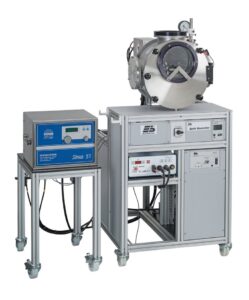What to do with equipment that is no longer in use? This is a question which was recently tackled by the Faculty of Science, Technology and Medicine (FSTM), the Department of Physics and Materials Science (DPhyMS) and the sustainability office with a donation of a splat quencher to the Department of Ciencias de la Tierra y Física de la Materia Condensada (CITIMAC) of the University of Cantabria in Spain. This is the very first equipment donation from the University paving the way for new initiatives.
As part of the future move of the Physics Department to Belval, the question of unused laboratory equipment arose and after discussing with different stakeholders internally and externally, Jon Dieguez, Building Project Manager at the Faculty, got the idea to donate them instead of recycling them. “Thanks to the efforts of Laurent Betry as Chief Sustainability Officer and the insightful input from Prof. Andreas Michels as user of the equipment, we managed to organise the donation to another academic institution.”
Collaborative research
The collaboration with the University of Cantabria constitutes a model for bridging connections with other academic institutions. The splat quencher is an instrument with which one can prepare amorphous metal alloys. In the synthesis procedure one first inductively melts a crystalline metal alloy, and the melt is then ultra-rapidly cooled, in a contactless way, to form an amorphous material. Cooling rates of up to one million Kelvin per second can be achieved during the process. Amorphous magnetic alloys are of particular relevance, since they are extremely soft magnetic materials that find widespread application in modern power electronic devices.
On the one hand, Prof. Andreas Michels is really enthusiast about this donation: “We have a long-standing collaboration with the group of Professor Fernández-Barquín at the University of Cantabria. They have recently embarked on a structure-property investigation of amorphous magnetic materials using neutron scattering techniques. Supporting them in this endeavour through the donation (and the ensuing on-site availability of a splat quencher) not only makes efficient use of resources but it also allows us to maintain our strong scientific collaboration.”
On the other hand, Prof. Luis Fernández Barquín is really grateful: “Since our initial contact with the group of Professor Andreas Michels we have been collaborating in an efficient manner on the understanding of different magnetic systems exhibiting nanometric correlations, achieving a great success in the form of joint publications, common experiments, and sharing students. The opportunity to use (in Cantabria) the splat quencher was kindly offered by the University of Luxembourg through Andreas, and was immediately welcomed by our group, since we not only have ample experience with the production of amorphous alloys but the splat also fits in with our current research interests. The equipment will be installed in a dedicated laboratory for the production of samples. The aim is to explore new aspects of the magnetic behaviour of magnetic amorphous alloys, and this equipment is ideal for such a task. The management and organisation of the donation has been fast, and the handling is an example of a trouble-free process between both Universities. The Vice-rector of Research of the University of Cantabria has personally expressed his appreciation for the generous donation and underlined that such agreements flourish Universities across Europe to get a maximised use of instrumentation.”
Sustainability focus
Donating equipment is perfectly in line with our commitment to sustainability and responsible resource management. It clearly embraces the acclaimed and sought Reduce, Reuse and Recycle policy, which will lead us to the collective journey towards a more sustainable and responsible future.
Laurent Betry supports this initiative: “As a result of the growth in its activities and staff, and its desire to use the most modern research facilities, our University has accumulated a wealth of equipment, furniture, IT and communications equipment. By donating what is no longer in use to associations, NGOs or education and research institutions, we are not only extending the lifespan of equipment made of valuable resources to be preserved, but also helping others to access equipment that is in working order and functional, free of charge. Freeing up space, controlling our storage and recycling costs, reducing our waste, minimizing our environmental footprint and that of others, contributing in our own way to the development of a circular economy while supporting structures involved in social, societal and educational activities – I can see nothing but advantages in getting involved in equipment donation activities.”
Call for more donations
By donating equipment, the University frees up space, paves the way for new research initiatives and the acquisition of cutting-edge equipment. The Faculty encourages other researchers to follow this example which will foster a culture of responsible resource use and collaborative research within our academic community.
Contact person: Jon Dieguez, Building Project Manager at the Faculty
